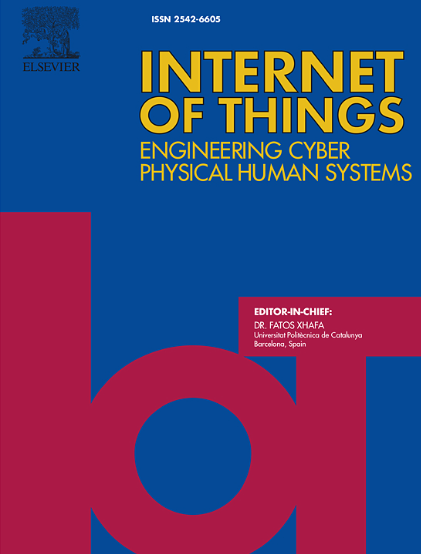Digital Twin and sustainability: A data-driven scientometric exploration
IF 6
3区 计算机科学
Q1 COMPUTER SCIENCE, INFORMATION SYSTEMS
引用次数: 0
Abstract
Digital Twin (DT) technology has emerged as a transformative innovation, enabling the creation of precise digital replicas of real-world systems, processes, and objects. By establishing a seamless connection between the physical and digital realms, DTs facilitate real-time data integration, advanced simulations, and optimization processes. This capability significantly enhances decision-making, predictive maintenance, and operational efficiency across diverse industries. The adoption of DT technology has accelerated rapidly, with sectors such as agriculture, healthcare, energy, and transportation leading its implementation. The present study employs scientometric analysis to evaluate the impact and efficacy of DT models in advancing the United Nations’ Sustainable Development Goals (SDGs). Utilizing cutting-edge tools such as CiteSpace and VOSviewer for network analysis, the research leverages data sourced from the Scopus database, encompassing publications from 2018 to 2024. The analysis examines key dimensions, including publication trends, citation dynamics, keyword co-occurrence networks, document co-citation patterns, country-level collaboration, and author co-citation networks. The study identifies influential publications, prominent researchers, and leading nations contributing to the evolution of DT technology, highlighting critical innovations and contributions. These insights not only provide a comprehensive understanding of the current state of DT technology in the context of sustainable development but also reveal emerging research directions and trends. Furthermore, the findings underscore the potential for interdisciplinary collaboration to advance the role of DT technology in achieving the SDGs, paving the way for future advancements in the domain.
数字孪生与可持续性:数据驱动的科学计量学探索
数字孪生(DT)技术已经成为一项变革性创新,能够创建现实世界系统、流程和对象的精确数字复制品。通过在物理和数字领域之间建立无缝连接,DTs促进实时数据集成,高级模拟和优化过程。这种能力显著提高了不同行业的决策、预测性维护和操作效率。在农业、医疗保健、能源和交通运输等行业的引领下,DT技术的采用正在迅速加速。本研究采用科学计量分析的方法来评估DT模型在推进联合国可持续发展目标(SDGs)方面的影响和功效。利用CiteSpace和VOSviewer等尖端工具进行网络分析,该研究利用了来自Scopus数据库的数据,涵盖了2018年至2024年的出版物。该分析考察了关键维度,包括出版趋势、引文动态、关键词共现网络、文献共引模式、国家级协作和作者共引网络。该研究确定了有影响力的出版物、杰出的研究人员和对数字水印技术发展做出贡献的主要国家,突出了关键的创新和贡献。这些见解不仅提供了对可持续发展背景下的DT技术现状的全面了解,而且揭示了新兴的研究方向和趋势。此外,研究结果强调了跨学科合作在推进DT技术在实现可持续发展目标中的作用方面的潜力,为该领域的未来发展铺平了道路。
本文章由计算机程序翻译,如有差异,请以英文原文为准。
求助全文
约1分钟内获得全文
求助全文
来源期刊

Internet of Things
Multiple-
CiteScore
3.60
自引率
5.10%
发文量
115
审稿时长
37 days
期刊介绍:
Internet of Things; Engineering Cyber Physical Human Systems is a comprehensive journal encouraging cross collaboration between researchers, engineers and practitioners in the field of IoT & Cyber Physical Human Systems. The journal offers a unique platform to exchange scientific information on the entire breadth of technology, science, and societal applications of the IoT.
The journal will place a high priority on timely publication, and provide a home for high quality.
Furthermore, IOT is interested in publishing topical Special Issues on any aspect of IOT.
 求助内容:
求助内容: 应助结果提醒方式:
应助结果提醒方式:


